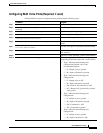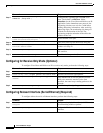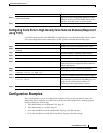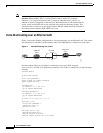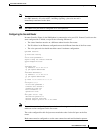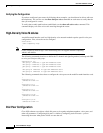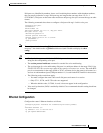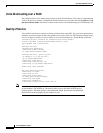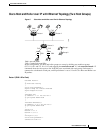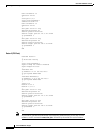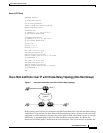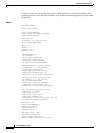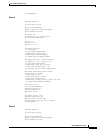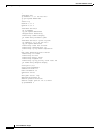
Cisco Hoot and Holler over IP
Configuration Examples
22
Cisco IOS Release 12.1(5)T
Voice Multicasting over a WAN
The configuration for voice multicasting sessions over IP on Frame Relay is the same as for the Ethernet
LAN in the previous example. Configure the WAN interface on each router with the ip address and ip
pim sparse-dense-mode commands as shown in the section, Voice Multicasting over an Ethernet LAN.
Quality of Service
Voice traffic is much more sensitive to timing variations than data traffic. For good voice performance,
configure your data network so that voice packets are not lost or delayed. The following example shows
one way to improve quality of service (QoS) for voice multicasting over a Frame Relay connection:
!Configure physical interface for transmitting multicast packets.
!Listen to packets of Session Announcement Protocol (SAP).
!This example uses a subinterface
!
interface serial0/0
encapsulation frame-relay
frame-relay traffic-shaping
no frame-relay broadcast-queue
!
interface serial0/0.1 point-to-point
ip address 5.5.5.5 255.255.255.0
ip pim sparse-dense-mode
frame-relay class hootie
frame-relay interface-dlci 100
frame-relay ip rtp header-compression
!
!Frame relay class commands.
!
map-class frame-relay hootie
frame-relay cir 64000
frame-relay bc 2000
frame-relay mincir 64000
no frame-relay adaptive-shaping
frame-relay fair-queue
frame-relay fragment 80
frame-relay ip rtp priority 16384 16383 64
Note In the frame-relay ip rtp priority command, the first number is the audio port. The
second number is the number of consecutive audio ports to which the IP RTP priority
queuing applies. The third number is the bandwidth, which should equal the bandwidth
needed for each call multiplied by the number of calls.




